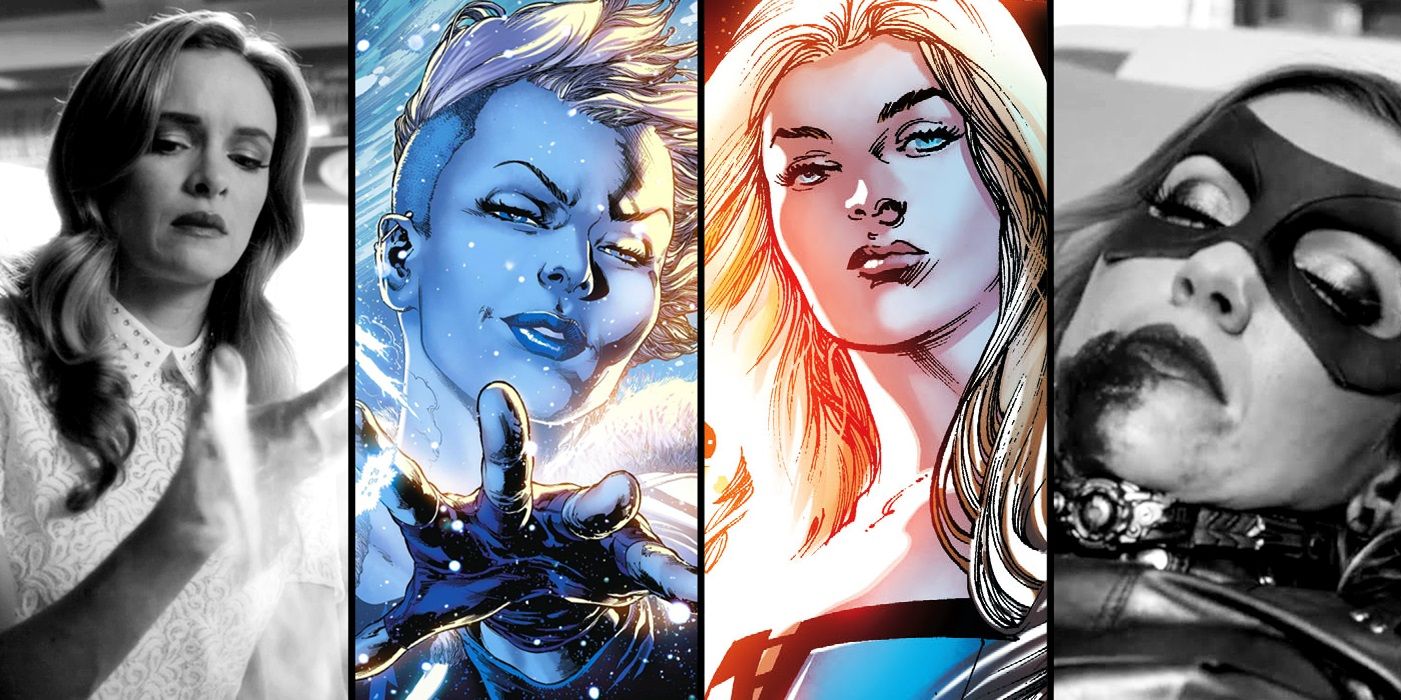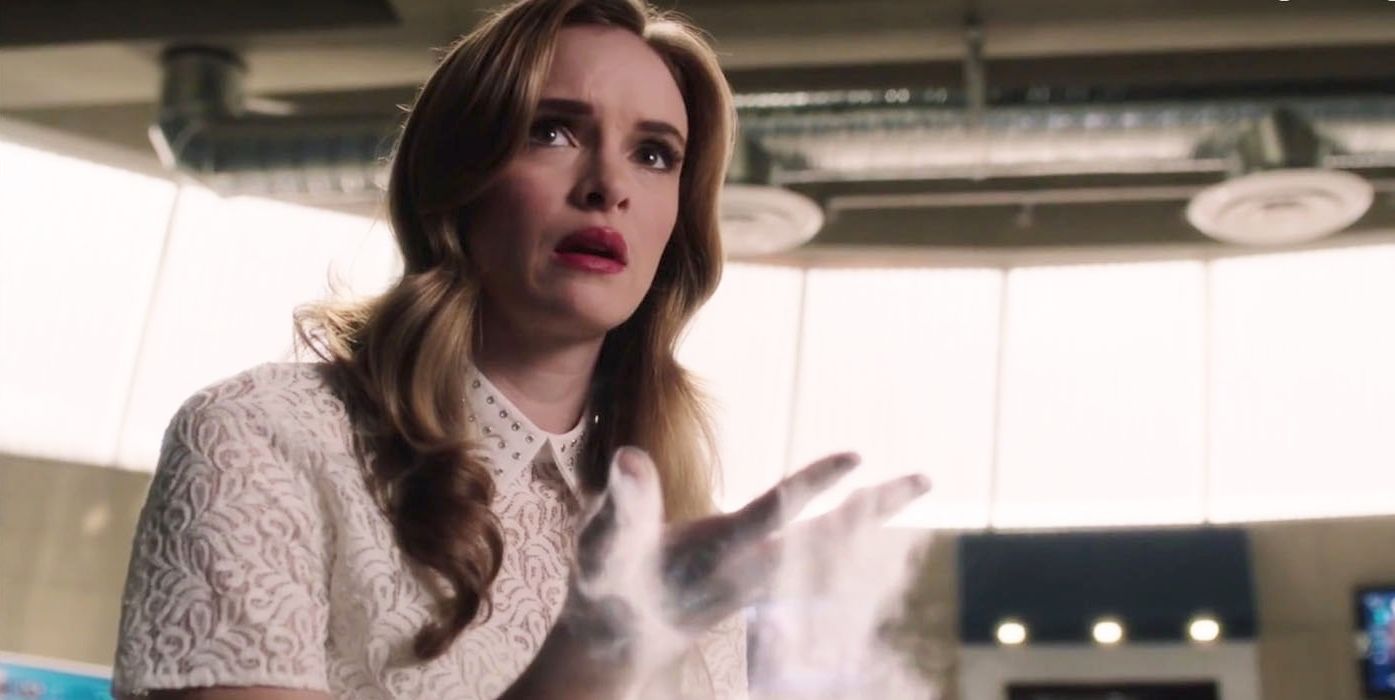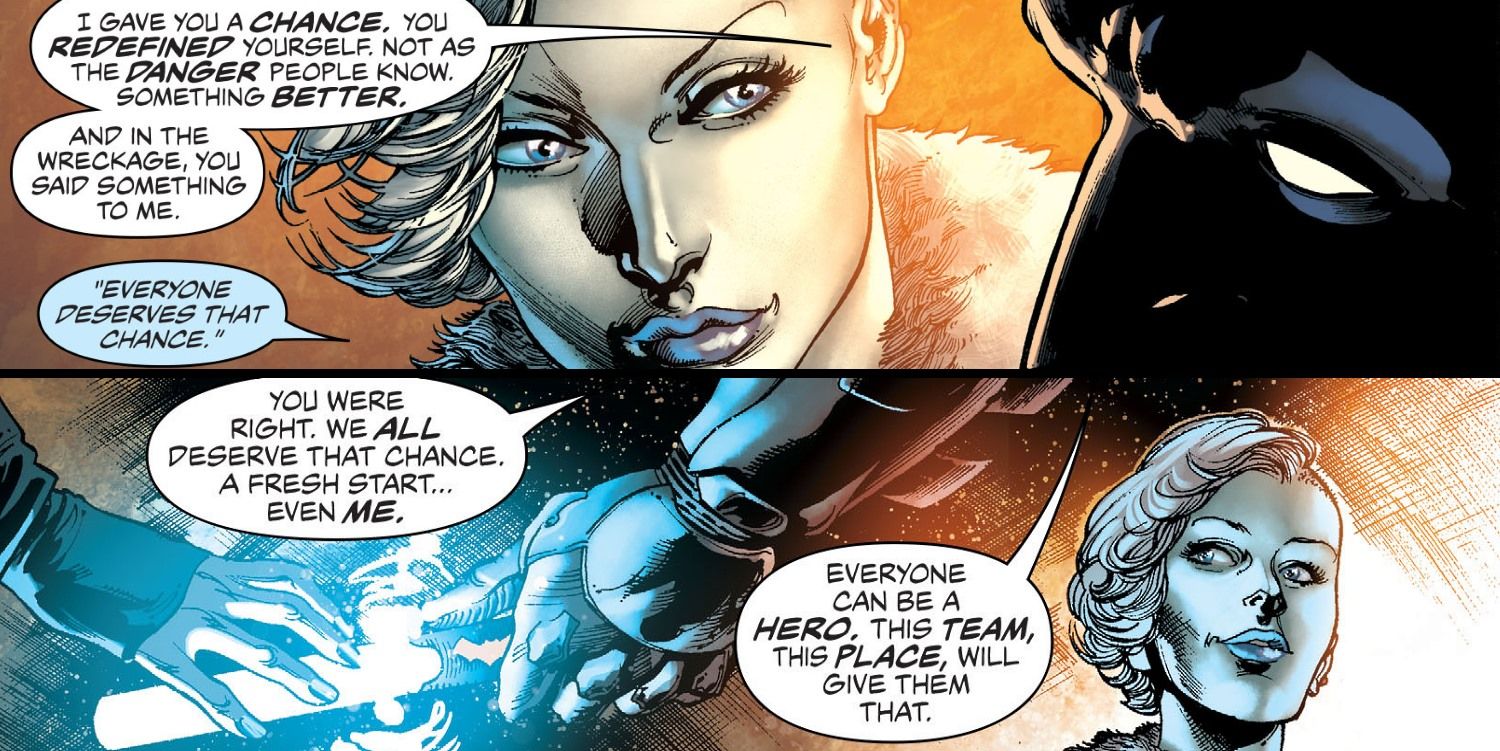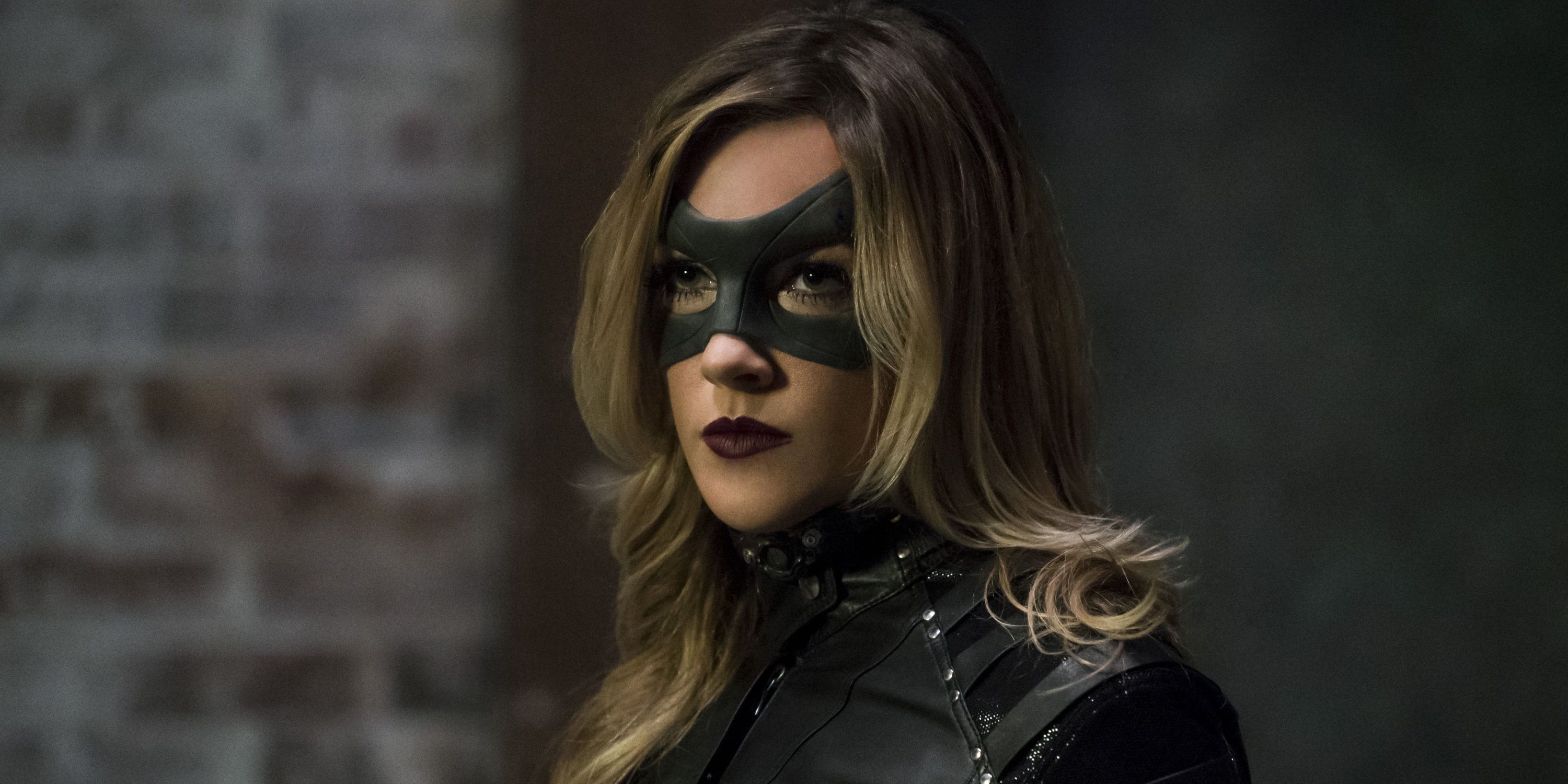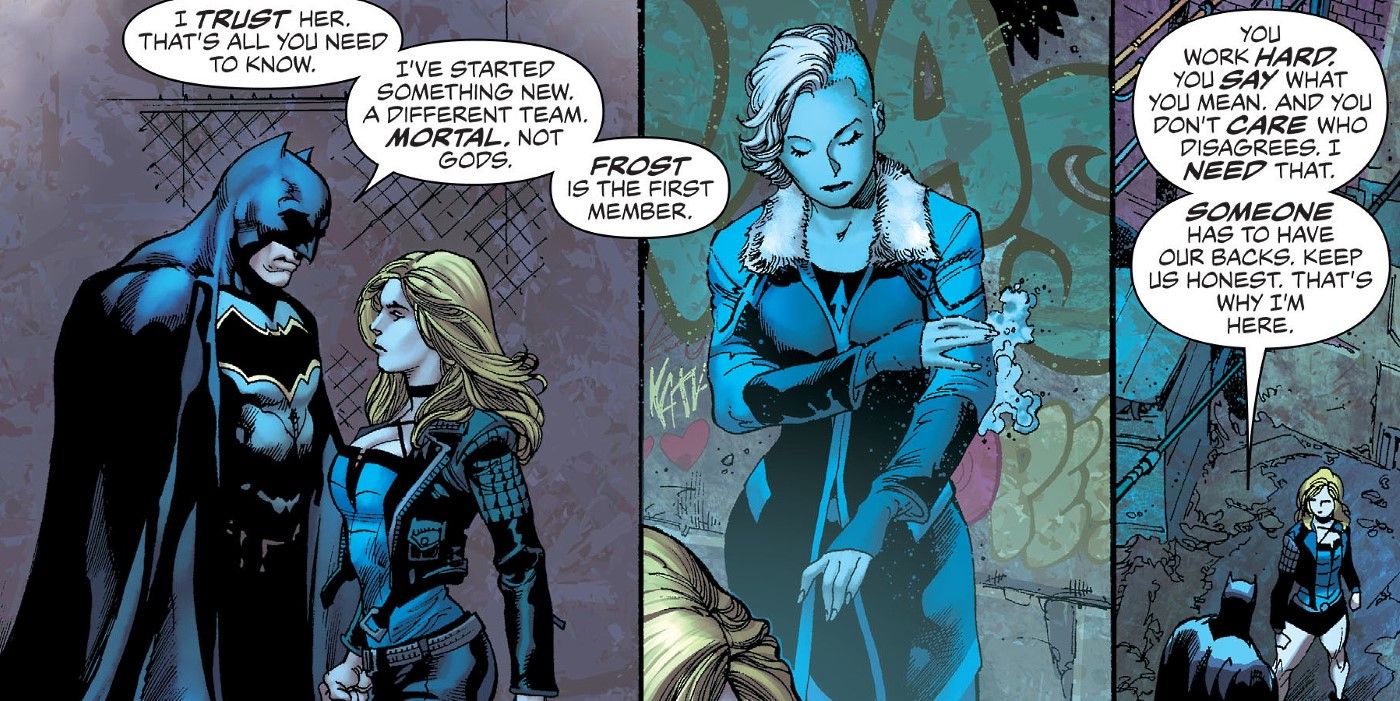NOTE: This article contains SPOILERS for Arrow and The Flash.
-
The CW won the love and adoration of comic book fans at the start of this new rise of superhero film and television, proving that a hero need not be super or even particularly famous to win a fan base. The success of Arrow soon led to the even more instantaneous success of The Flash, leading to Legends of Tomorrow, leading to Supergirl... and the expansion of DC TV continues to this day. The excitement was so palpable, viewers and comic fans even resisted the urge to wonder if some of the changes being made - like fitting dozens of standalone heroes and villains into supporting roles - would come at a cost.
Today, it's possible to see the drawbacks, or creative sacrifices that were made. The famous Black Canary had traditionally met Oliver Queen as a fellow vigilante, where in Arrow, the choice to make Laurel Lance (Katie Cassidy) an old flame confined her to following his lead for the remainder of the series. Where Killer Frost was beloved as a deadly, unapologetic femme fatale, but introducing Caitlin Snow (Danielle Panabaker) as a friend and scientist to Barry Allen meant her powers ( and power) would be something to hide, not control.
The fact that these two examples of characters being weakened, or in the case of Black Canary's death, being "fridged" (and ultimately replaced) stood in direct opposition to male characters having far greater success made things... uncomfortable. Whether or not it's a direct response to the fan outcry over the treatment of these DC women, the comics publisher is making its stance on their strength quite clear.
It's good news, since those unsatisfied with these interpretations of Laurel and Caitlin now have a cure: in the first issue of Justice League of America: Rebirth #1, Black Canary and Killer Frost have never been more important.
Caitlin Snow - The CW Version
The CW's version of Caitlin Snow started off promising for those looking forward to her villainous turn. Her fiance was one life claimed by the hubris of Dr. Harrison Wells, meaning if and when she did develop superpowers, would have more than enough reason to seek revenge. Or, conversely, the development of such powers without a close friend or romantic partner to ground her could justify the desperation and tragedy of the Killer Frost of the comics. When her powers began to manifest in Season 3, hopes for such a twist were high... but it wasn't to be.
Unfortunately, instead of driving Caitlin to emotional and physical distance from her friends, and letting her anger and pain fuel her powers - or, as in the comics, actually require her to use them, or die - the writers had a different idea. In short, add Caitlin Snow to the long list of TV and movie women whose sudden superpowers are a burden, something to hide, and be fearful of (it's literally the opposite of Frozen). If that weren't enough, the show made it clear: Caitlin using these powers is evil. As in 'you will become a separate identity who is a villain if you become as cool as you are in the comics.'
At present, Caitlin must wear a necklace that keeps her superpowers locked away so she can't be dangerous to anyone. There's plenty of allegory there for those looking for it, but recent episodes have shown Caitlin may be able to keep her evil split personality at bay... maybe. It doesn't really make sense.
Caitlin Snow - The DC Version
Believe it or not, the blistering cold badass known as Caitlin Snow a.k.a. Killer Frost in the pages of DC Comics has an even more tragic backstory in the modern era. No fiance perishing in an industrial accident, or old fashioned heartbreak - just a promising career in science that could change the world... until evil forces wanting to keep the world as it was ended her life. Well, ended the life she had known, creating a 'heat vampire' out to feed on the life force of everyone who had wronged her. And in the lead-up to Justice League of America: Rebirth Killer Frost has proven to be much, much more than a victim.
No evil 'alter ego' either, meaning Caitlin Snow was forced to pay for the crimes she had committed as a supervillain, even if she was draining people of thermal energy to keep herself alive. That landed her a spot in the Justice League vs. Suicide Squad event series as one of Waller's lackeys - right up until she sacrificed her life to save mankind, with Batman right beside her sharing in the act. Pulling off the winning strategy didn't convince Batman she was as powerful as any hero - her earlier ability to take out the entire Justice League did that already - but her willingness to die showed she held as much potential as any League member.
Writer Steve Orlando keeps the idea that Caitlin Snow's power isn't ice-based, but personality-based, and takes it a step further. After personally ensuring her freedom from Amanda Waller, Batman walks her into the JLA's new headquarters - letting her be the first to see it, as she was the first to show him that being a superhero is about the present and future, not the past. It's just too bad that in the same week The Flash sees Caitlin Snow talked down from becoming the evil monster inside of her, JLA: Rebirth sees Batman acknowledge that it's Caitlin's heart that defines her, not her tragic past or poor choices.
Black Canary - The CW Version
By this point, nobody who is a) aware of the comic book version of Black Canary, and b) even somewhat aware of Arrow's current story line needs to be told that The CW's version has been... strange, to say the least. In the clearest (and perhaps most forgiving) sense, the version of Dinah Laurel Lance played by Katie Cassidy is simply not the version of Black Canary from DC history. It's the one aspect of Oliver Queen's story that the showrunners have taken most liberties with - introducing Laurel's sister as the original Canary, having Laurel's ascent to heroism hampered, not helped by Oliver - and often given unsatisfactory justification or explanation. At this point, if there is an actual reason why the producers didn't have Laurel grow into the new replacement Black Canary, it has nothing to do with what would have made sense in the show.
In the end, Laurel was given some dignity on her deathbed. But her story remains a tragic, and somewhat meandering one. A story of a heartbroken and betrayed girl who got herself entangled romantically between two friends, fell into addiction, recovered, struggled to separate her personal and professional lives, and eventually found her true calling in continuing her sister's identity, although Oliver Queen spent the remainder of her life either discouraging her, or begrudgingly agreeing to fight beside her (though she never became as effective or fearsome as he). That's a heck of a story, but as we said before, not really a Black Canary one - at least not one fans either expected or felt was deserved.
Black Canary - The DC Version
We've already taken a lengthy look at how Arrow's version of Black Canary (the one named Laurel Dinah Lance) could have grown into the DC version of the heroine, instead of introducing a new Dinah Drake in the mold of the New 52 Canary. Nevertheless, it's hard to top the version of Black Canary introduced in the New 52. Like most heroes given younger, more modern re-imaginings in the reboot, Dinah Drake embodies all the same virtues and attitude of the Silver Age Canary - just several years away from one day marrying Oliver Queen, and leading the Justice League of America.
Dinah took a more prominent role in DC's catalogue following the "Rebirth" relaunch, appearing in both Batgirl and the Birds of Prey and Green Arrow as the leather jacket-wearing, criminal face-punching vigilante fans know and love. Having already stood up to Oliver Queen in his own comic, and shown she's the Bird of Prey most likely to roll her eyes at absurdity or complacent heroes, her true strengths have apparently caught the attention of Batman himself. In Justice League of America: Rebirth, Batman and Killer Frost head to Seattle to add yet another female fighter to their roster.
Despite Canary's ability to knock Killer Frost on her backside, the real reason the Justice League needs her, according to Batman, is that "You work hard. You say what you mean. And you don't care who disagrees. I need that. Someone has to have our backs. Keep us honest." In other words, the woman who spends her nights pummeling thugs is destined for greater things. And her confidence and willingness to speak her mind aren't things that get in the way of her success, but the very things that make her an invaluable conscience to her superteam. In even fewer words: she's Black Canary.
-
It's unlikely that the story or roster of Justice League of America was shaped by the perceived shortcomings (or successes, for that matter) of The CW's superheroes. But when millions of fans watch DC women on TV every week, the fact that they pale in comparison to the real things is an issue that has to be addressed. Hopefully, even before the Arrowverse decides to have a female big bad of its own.
NEXT: DC's New Justice League is a Win For Diversity
Justice League of America: Rebirth #1 is available now.

